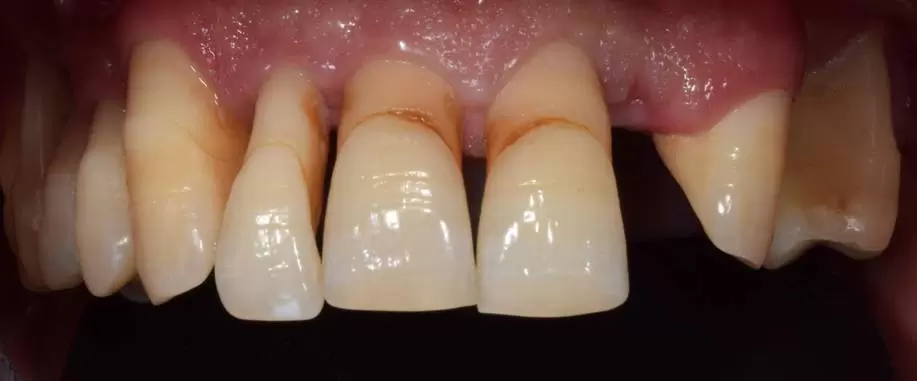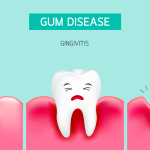Treatment for receding gums, one of the first symptoms of gum disease, varies from non-surgical solutions to a variety of surgery procedures. Healthy gums are the Skin of Your Teeth. Receding gums treatment restores healthy gums and helps prevent more serious forms of gum disease that can lead to tooth loss and other health problems.
If you are experiencing any of these six symptoms of receding gums, talk to your dentist about the best treatment options.For a mild case of gum recession, a deep cleaning may take care of the problem. Also known as tooth scaling and root planning, this type of treatment for receding gums removes plaque and tartar from the surfaces of your teeth and roots below the gum line. Plaque is a biofilm, composed of bacteria and the sticky substances they secrete, which cover the surface of the teeth. If you don’t do a good job of removing the plaque with proper daily dental care, plaque will harden into tartar that can only be removed by a dentist or dental hygienist.
During the deep cleaning, a dental professional also smoothes, or planes, the exposed root area so that it is more difficult for bacteria to stick to it. An antibiotic may also be prescribed to remove any harmful remaining bacteria.For more advanced cases of receding gums, treatment options involve surgery performed by your dentist or periodontist (a specialist that treats diseases of the gums and supporting structures of the teeth). Depending on the severity of your gum recession, one of the following surgical procedures will be used:
- Regeneration – Severe cases of receding gums can destroy the bone that supports your teeth. Regeneration is a surgical procedure that regenerates lost bone and tissue. The first step, as in pocket depth reduction, is to fold back the gum tissue so that bacteria in the pocket can be removed. During the next step of this receding gums surgery treatment, your dentist or periodontist will apply a regenerative material (i.e., membrane, graft tissue, or tissue-stimulating protein). The material will stimulate your body to regenerate bone and tissue so that your teeth will be secure. During the final step of the procedure, the surgeon snugly repositions the gum tissue over the tooth roots and bone.
- Soft Tissue Grafts –There are several types of soft tissue grafts, but the most common one is a connective tissue graft. During this receding gums surgery treatment, your periodontist takes gum tissue from your palate (the roof of your mouth) or from another donor source to cover one or more exposed roots. This procedure restores the gum line and helps reverse serious gum disease.



